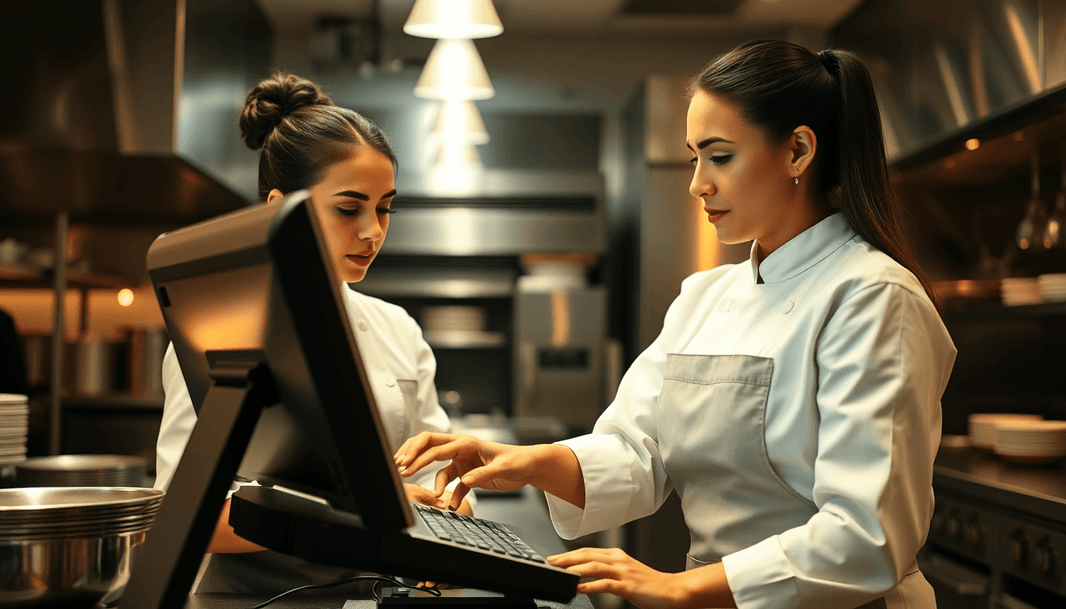Food cost is one of the most critical factors in running a successful restaurant. Keeping track of food expenses ensures profitability, prevents waste, and helps in menu pricing. However, many restaurant owners struggle to maintain optimal food costs due to fluctuating ingredient prices, portion inconsistencies, and waste.
Understanding how to calculate food costs and implementing cost-saving strategies can boost your restaurant’s profit margins while maintaining high-quality food and service. In this guide, we’ll break down how to calculate food costs, why they matter, and essential tips to control them.
What is Food Cost and Why is it Important?
Food cost refers to the percentage of revenue spent on ingredients and raw materials to prepare menu items. It is a crucial metric in restaurant management because it directly affects profitability, pricing, and overall financial health.
A well-managed food cost ensures that you are:
- Maximizing profitability by keeping ingredient costs under control.
- Reducing waste and over-purchasing, ensuring better inventory management.
- Setting the right menu prices to maintain a balance between affordability and profitability.
How to Calculate Food Cost in a Restaurant
To calculate food costs accurately, follow this simple formula:
For example, if your restaurant spends $5,000 on ingredients in a month and generates $20,000 in total sales, your food cost percentage is:
Industry Benchmark:
Most profitable restaurants aim for a food cost percentage between 25-35%, depending on the type of cuisine and menu pricing.
Step-by-Step Guide to Calculating Food Cost
1. Determine Your Beginning and Ending Inventory
To track food cost accurately, start by calculating inventory at the beginning and end of a specific period (e.g., weekly or monthly).
For example:
- Beginning Inventory: $4,000
- Food Purchases: $6,000
- Ending Inventory: $3,500
2. Track Food Purchases & Ingredient Costs
Keep detailed records of all food purchases, including invoices and receipts. Categorize them into essential food groups (meat, vegetables, dairy, etc.) for better tracking.
Pro Tip: Use an inventory management system to automate food cost tracking and monitor spending patterns.
3. Calculate Cost Per Dish (Recipe Costing)
To set the right menu prices, determine how much each dish costs to prepare using this formula:
For example, if you’re making a burger and use:
- Bun: $0.50
- Beef Patty: $2.00
- Cheese: $0.75
- Lettuce, Tomato, Sauce: $0.75
- Fries: $1.00
Total cost per serving = $5.00
If you sell the burger for $15.00, your food cost percentage for that item is:
Target food cost percentage for most menu items should be between 25-35%. If your cost is too high, you may need to adjust portion sizes, find alternative suppliers, or tweak pricing.
Essential Tips to Control Food Cost in Your Restaurant
1. Reduce Food Waste
- Train staff on portion control and standardized recipes.
- Monitor inventory to avoid overstocking perishable ingredients.
- Implement a first-in, first-out (FIFO) method to prevent spoilage.
2. Optimize Supplier Pricing
- Negotiate better deals with vendors or consider bulk purchasing.
- Compare multiple suppliers to find the best price-to-quality ratio.
- Track market price fluctuations to adjust menu pricing when necessary.
3. Monitor Portion Sizes & Standardize Recipes
- Use precise measurements for every ingredient in each dish.
- Create recipe cards for consistent portion control and prevent overuse.
- Train chefs and kitchen staff on food portioning techniques.
4. Adjust Menu Pricing Strategically
- If an ingredient’s price increases, adjust your menu pricing accordingly.
- Highlight high-margin dishes in promotions or special deals.
- Analyze customer preferences and remove low-profit, slow-selling items.
5. Invest in Restaurant Management Software
- Use an inventory & cost control system like Fraveen to automate food cost tracking.
- Monitor real-time reports to detect cost fluctuations and trends.
- Integrate your POS system with financial analytics for better decision-making.
Final Thoughts: Stay Profitable with Smart Food Cost Management
Mastering food cost calculation and control is essential for running a profitable and efficient restaurant. By tracking ingredient costs, standardizing recipes, reducing waste, and optimizing pricing, restaurant owners can maintain profitability while delivering high-quality food.
📊 Want to simplify food cost management?
Fraveen helps restaurants track inventory, optimize food costs, and automate financial reporting—all in one easy-to-use platform!
🚀 Get started today and take control of your restaurant’s profitability!






